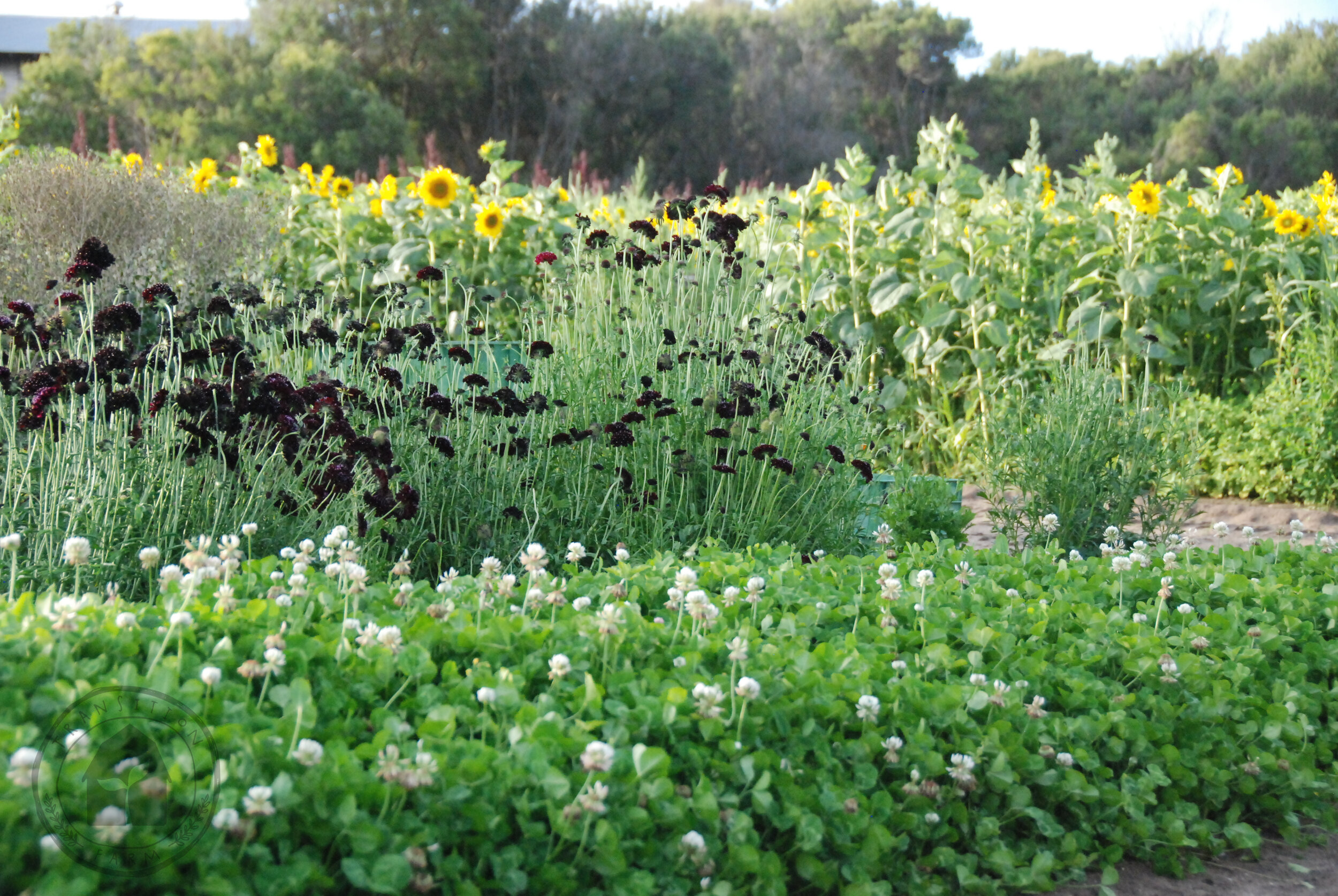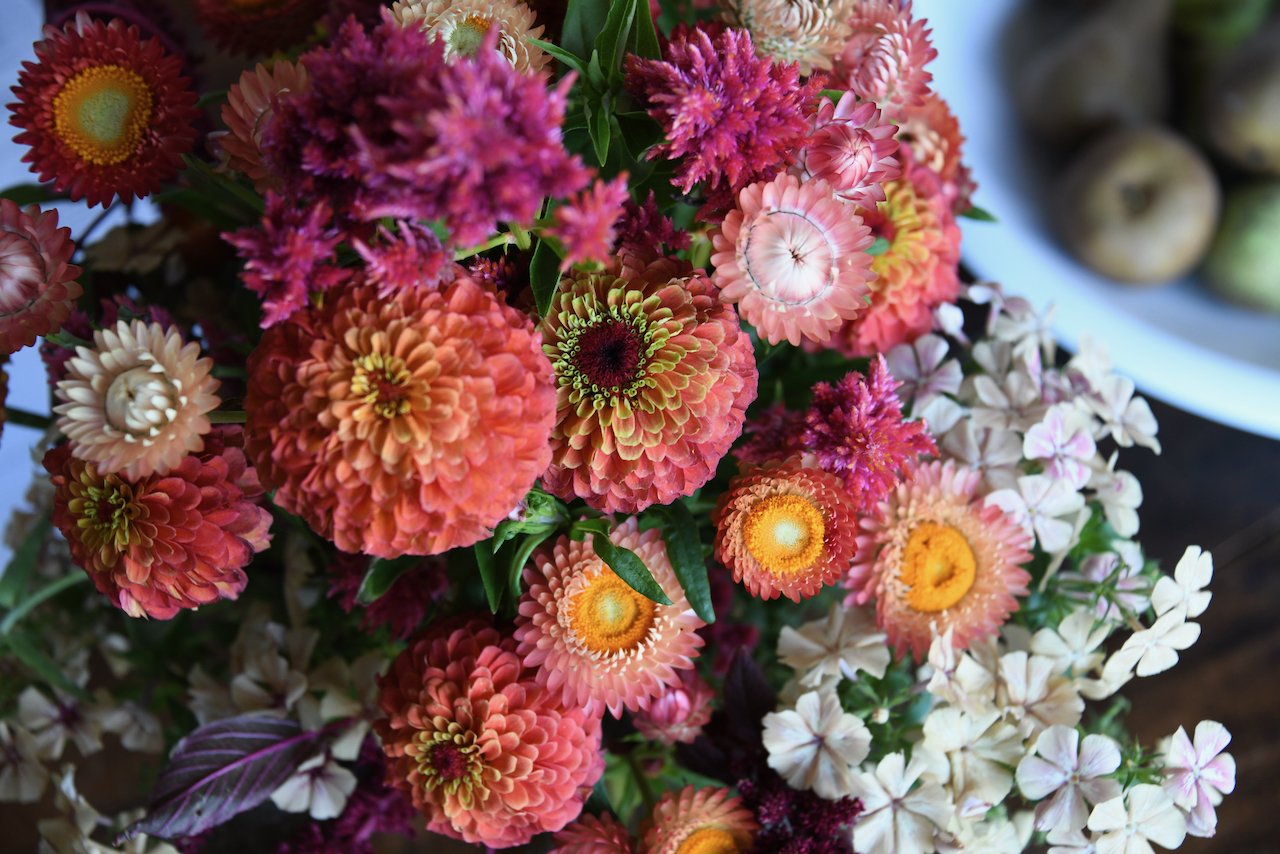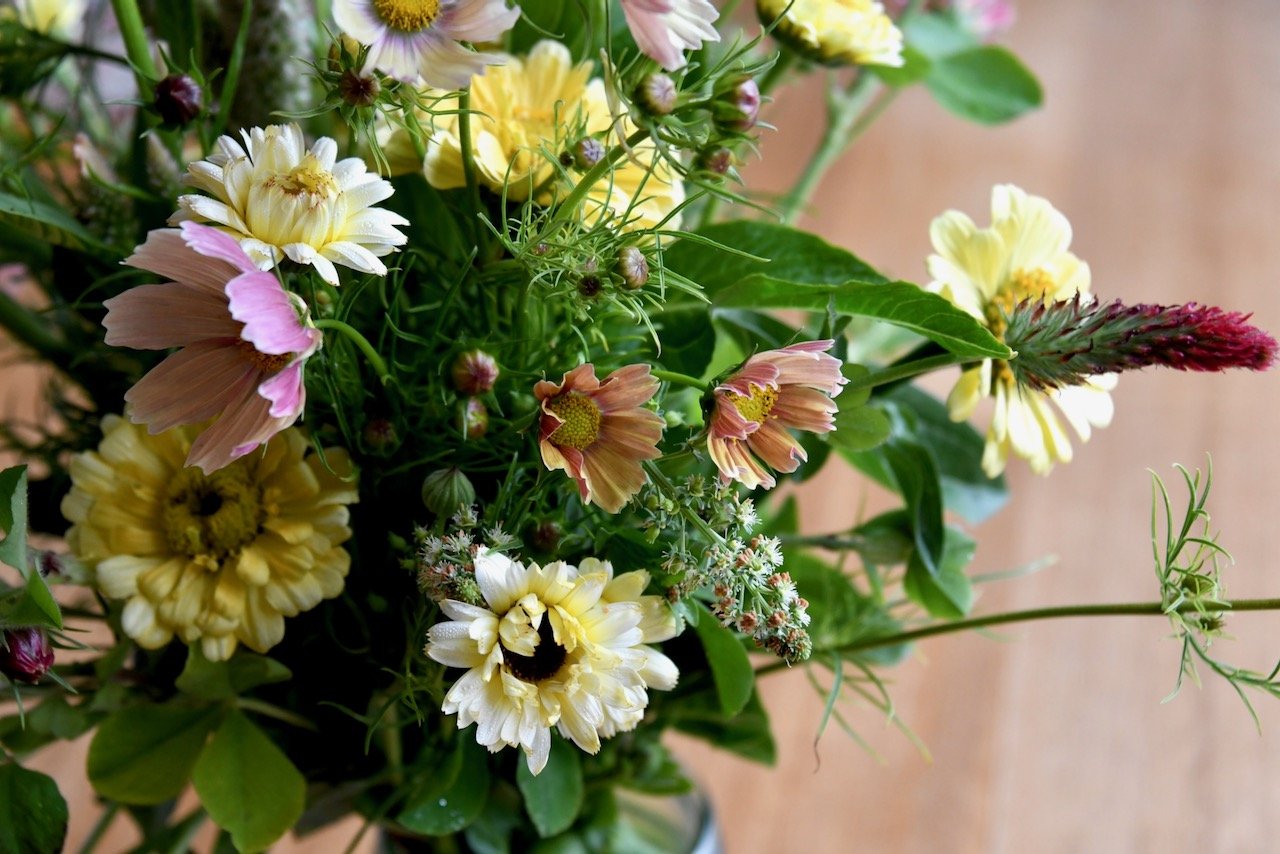Flowers to Direct Sow in the Warm Season
/As we move into the warm season here in Southern Victoria, and our spring bulbs are distant memories, filling in the garden by planting seeds for summer blooms is an easy task. Here are easy to grow flowers which can be direct sown once the soil has warmed to 20C. In addition to all being cut flowers, they are also sources of pollen and nectar, attracting beneficial insects to the garden.
ZINNIAS
Germinating in soil above 21F and not particularly liking their roots to be disturbed, we have had great success direct sowing zinnias. With a huge variety of colours and sizes, zinnias always standout in the garden. They combine well with an array of other flowers and fillers, have a long vase life and add colour and form to the veggie garden.
Many of the zinnias we offer have been chosen because of their long stems. To ensure the stems do not snap, we provide support.
Cosmos add the whimsey of a summer meadow to a garden as their delicate stems wave in the wind. They germinate easily in soil above 20C and prefer to establish now while the nights are cool. They require the daylight to reduce to begin to prolifically flowering so expect their best display in mid to late summer
Easy to grow, versatile and visually appealing as an immature and mature flower, what really draws us to all scabiosa’s are their incredible colour! From deep merlot to black to peach, they are great as an accent bloom in mixed arrangements as well as being stunning and really unusual in boutonnières or small vases.
Easy to grow, prolific bloomers, unusual, multi petalled, papery blooms with a color variation in each bloom and attractive to pollinators, we LOVE strawflowers fresh and dried. They are a great addition to cut flower arrangements with a long vase life and a colour that changes as they age. They mix with brights AND pastels adding interest late spring - autumn.
Scented, great vase life, attractive to a wide range of beneficial nectar and pollen feeders and so gorgeous, mignonette is simple to direct sow, germinates in soils above 20C and adds a cottage cutting garden feel to any border. The scent waifs through the garden and the movement of the beneficial insects on them will keep you spellbound.
We have written more about this flower of legend and lore here.
Calendula is an all-season flower that thrives direct sown in warmer and cooler months. In addition to attracting many beneficial insects, it is lower growing which makes it at home on the edges of beds, attracting native bees, predatory wasps and lacewings. It also has a long vase life and with the beautiful varieties available, some with subtle almost paint-like colour and texture qualities, calendula is an easy and rewarding direct sown companion.
Calendula is also a great Autumn sown flower, blooming in Winter like bright little suns!
Tithonia blooms from mid summer to late Autumn. It is well loved by bees, butterflies and beneficial nectar feeders. I still have fond memories of daily visits from hummingbirds in North America to the tall, vibrant Tithonia. The bright colour mixes well with deep purples, soft yellows and foliage such as amaranth and orach. We love Tithonia ‘Torch’ mixed with sunflowers and marigolds on the borders of our tomato crops.
It germinates best in soil that is 23C.
TIPS FOR SUCCESS DIRECT SOWING FLOWERS
Ensure the area is weed free. Newly sprouted flowers perform better if they are not struggling for light and resources.
Mark where you sow. Seed leaves - the first two leaves that emerge - are different from true leaves. To ensure you do not mistake your newly sprouted flowers for weeds, mark the area with a stick, cut the bottom off a plastic bottle or use any other sort of marker to remind you…”I have sown flowers there”
Sow denser and then thin. This allows you to not be disappointed if something eats a newly germinated flower. And thinning ensures that the plant has the space required to really achieve its potential.
There are so many benefits to including flowers into any garden - Beauty, inspiration, food and habitat for beneficial insects!
Sunflowers, marigolds, nasturtium, crimson clover…the list of flowers to direct sow is extensive. Our packets include sowing information which highlights if a flower can be direct sown.
Good Luck and hoping you have a summer full of flowers!


























